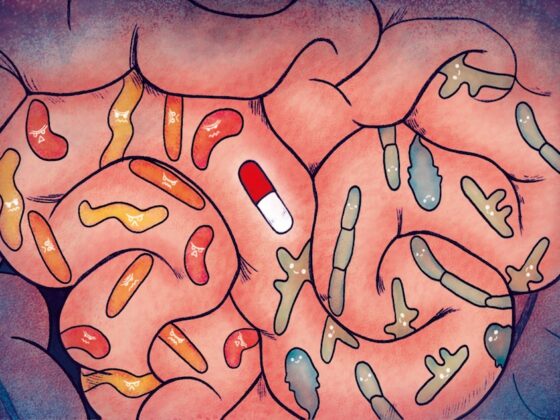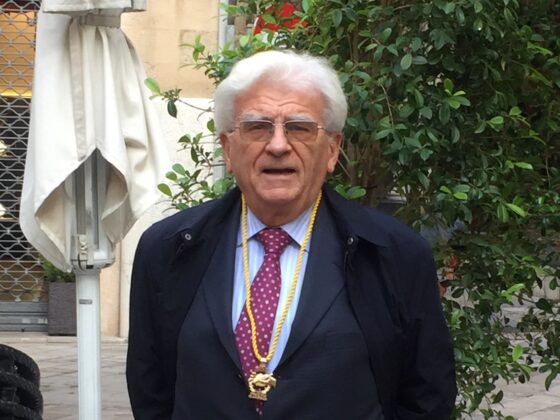Improving treatment of older patients and closing the East−West divide were the focus of a Community 365 Roundtable on Inequalities organised by the European Cancer Organisation on the 14th October.
This event was the first of a series of Community 365 roundtable meetings. Community 365 is an European Cancer Organisation initiative that brings together charity, philanthropy and industry contributors to provide ideas, guidance, practical support and resources for its work in convening stakeholders and building consensus in the European cancer community. “The (current) political momentum towards cancer at the European level is encouraging,” Mark Lawler, board member of the European Cancer Organisation, told the meeting. “But as we grasp the nettle it’s important, we redouble our efforts to close the cancer inequalities divide that some citizens face in their everyday lives.”
Peter Lindgren, from the Swedish Institute for Health Economics, outlined the link between ageing populations and the growing incidence of cancer. He explained that between 1995 and 2018 the incidence of cancer in Europe increased by 50% from 2.1 to 3.1 million cases, accompanied by a 20% increase in mortality, from 1.2 to 1.4 million over the same time period. The underlying cause, he explained, was ageing populations. Overall, 70% of cancers are diagnosed in over 70-year-olds, which is expected to double by 2040. Statistics for 2018 show three out of five incidence cases of cancer, and three out of four cancer-related deaths occurred in people aged over 65. One of the key issues is a shift from in-patient to ambulatory care, and Lindgren concluded that a new continuity of care for older patients is urgently needed.
Etienne Brain, from the International Society of Geriatric Oncology, stressed the importance of using geriatric assessments to adjust treatment according to individual health status of elderly patients. “Just as gene-expression profiles provide important information for targeted therapy, geriatric assessments provide important information for targeted geriatric interventions,” he explained. He commented that two worlds of geriatrics and oncology need to collide and consider patient preference and acceptability. It is important to integrate a full geriatric assessment within the oncology decision process. “It’s an optimisation process where if we define disease better, we can take better care of patients.” Brain quoted a systematic review of 10 studies demonstrating that geriatric assessments were potentially helpful for over 70% of older patients.
Cary Adams, from the Union for International Cancer Control (UICC), emphasised the value of introducing coordinated policy responses to support older people with cancer. By integrating evidence-based data, connected voices of multiple stakeholders and a cancer control plan, it is possible to improve outcomes, he said. As a gold standard, he highlighted the French initiative, which receives annual funding of €5.2 million from the French government, which has resulted in an increase in the number of geriatric oncology centres in France from 15 to 28, as well as national guidelines for geriatric oncology, training for oncology teams in non-specialist centres to treat geriatric patients, and increased research in geriatric oncology.
Addressing the gap in the quality of cancer care between Central/Eastern Europe and Western Europe, Linda Gibbs focused on the example of cervical cancer. Gibbs, who is the Pfizer Oncology lead for Central/ Eastern Europe, highlighted the situation in Romania where more than 14% of women with cervical cancer die, compared with an EU average of just 3.7%.
Mark Lawler, from Queen’s University Belfast, saw data and cancer intelligence as an enabler of action to address the East−West divide. One approach, he suggested, was to introduce country dashboards to benchmark best practice. Dashboards, illustrating current status of cancer care, research and other key components within National Cancer Control Plans (NCCPs), can be used to monitor, measure and communicate progress.
Eduard Vrdoljak, from University Hospital, Split, provided insights into the development of Croatia’s recently implemented national comprehensive cancer plan (NCCP). Croatia, he explained, is one of the most recent European countries to have introduced an NCCP. GLOBOCAN 2012 data showed that 60% of men diagnosed with cancer died from their disease compared with 31% in Denmark. It was this poor comparator that provided the impetus for Croatia to adopt an NCCP.
The risks of not having effective NCCPs, said Vrdoljak, are that patients die unnecessarily from preventable and treatable cancers. “But you can’t just copy a national cancer plan. You have to assess the magnitude of the problem in your specific country, set measurable control objectives, evaluate possible, evidence-based strategies for cancer prevention and control, and choose priorities for initial cancer control activities,” he explained.
After extensive consultations, Croatia set its three top priorities: development of a national oncology network and patient registry, enhancement of primary and secondary prevention programmes, and improved access to modern radiotherapy. These latest measures have already had encouraging effects on patient survival, he noted. The €198 million invested into Croatia’s NCCP, Vrdoljak predicted, will result in more than 5,000 fewer people developing cancer due to better prevention; almost 7,000 more people (8%) being cured; more than 113,000 life-years gained; and €45 million being saved on indirect costs — such as sick-leave, early retirement and informal care. The cost per Quality-Adjusted Life Years (QALYs) gained had been calculated as an acceptable €1,345.
John Ryan, the Director for Public Health DG SANTE at the European Commission, told the meeting that despite the Covid-19 pandemic, the Europe’s Beating Cancer Plan remains on schedule to be adopted by the European Commission by the end of December 2020. “In all areas the golden thread running through the activities will be to address the issue of inequality,” said Ryan.
The focus on the complexities of treating ageing patients and the inequalities within Europe were considered the highest priority, in part because of the emphasis EU Health Commissioner Stella Kyriakides has put on addressing inequalities in previous meetings. The European Cancer Organisation’s Inequalities Network is producing a ‘call to action’ paper, focusing on East−West divide, gender, ethnicity and age, and other marginalised and neglected patients groups. The paper will be launched during an online session on “Inequalities: Disparities and Discrimination in Cancer Care” at the European Cancer Summit, scheduled for Wednesday 18 November.











